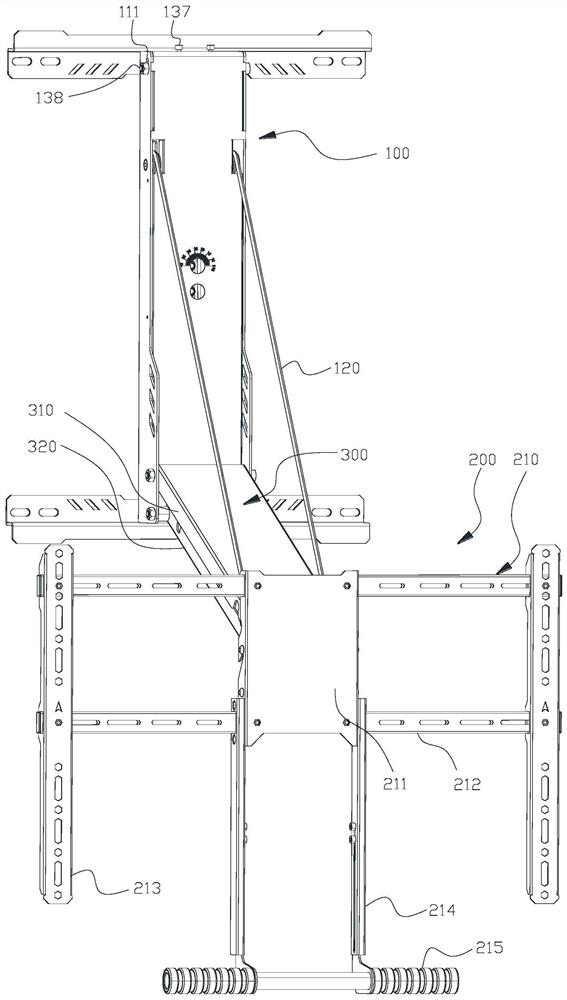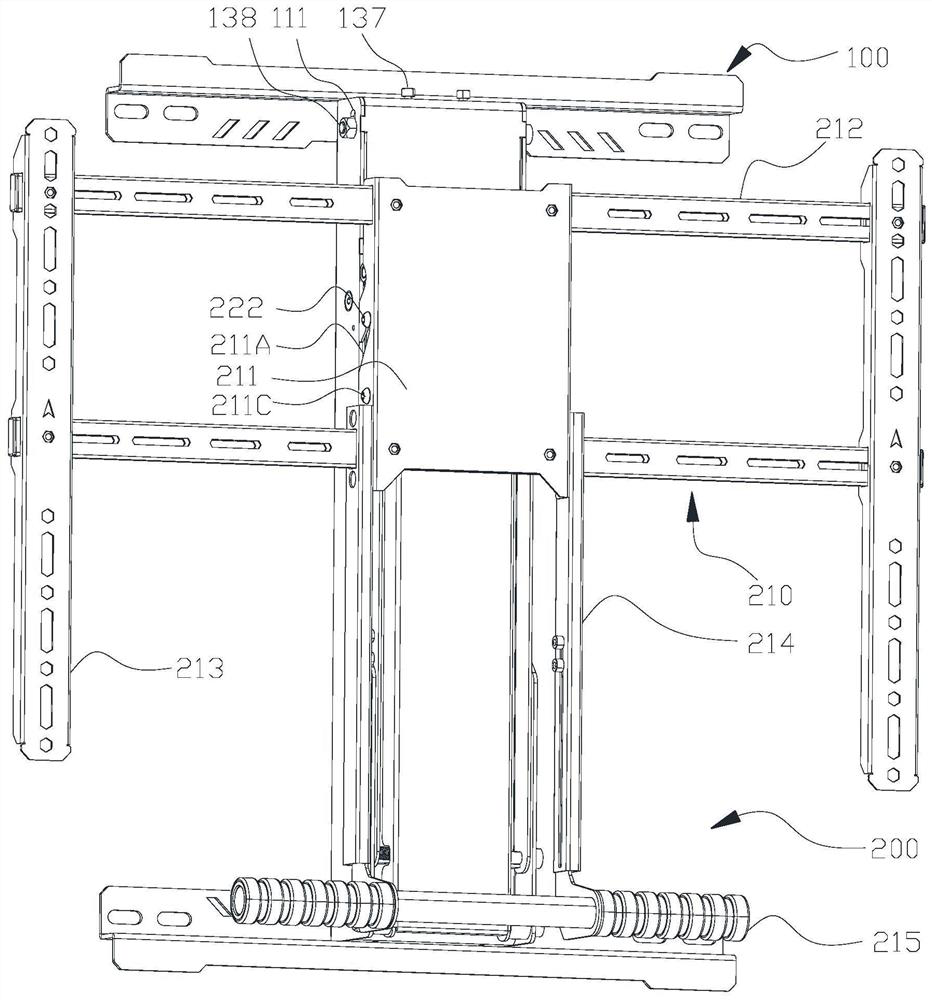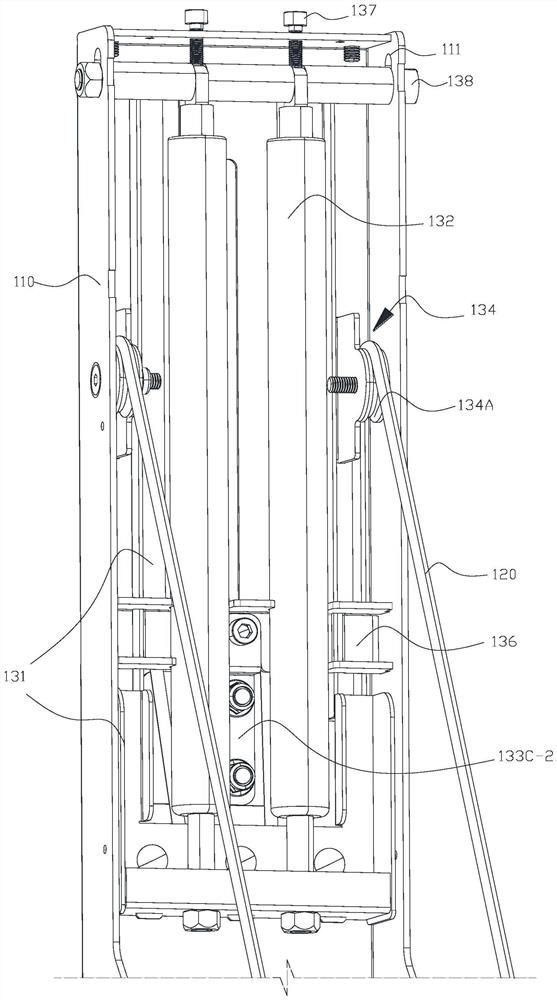Adjustable support for display equipment
A display device and an adjustable technology, which is applied in the direction of mechanical equipment, machines/brackets, supporting machines, etc., can solve problems such as premature air leakage failure, fatigue wear, deformation and fracture, and achieve safety, small overall thickness, and storage space small effect
- Summary
- Abstract
- Description
- Claims
- Application Information
AI Technical Summary
Problems solved by technology
Method used
Image
Examples
Embodiment 1
[0042] Reference attached figure 1 to attach Figure 10 , the adjustable bracket for the display device in this embodiment includes three parts: the mounting base 100, the connecting arm 300, and the hanger 200. The mounting base 100 is fixedly connected to the surface of the object, preferably a flat surface, such as a wall surface or cabinet surface. The hanger 200 is used for installing a display device, and the display device includes a general display and a tablet interactive device. Both ends of the connecting arm 300 are rotatably connected to the mounting base 100 and the hanger 200 respectively.
[0043] The mounting base 100 includes a casing 110, a lifting device 130, and a cable 120. The casing 110 is fixedly connected to the installation plane. The lifting device 130 is located inside the casing 110 to avoid user contact and exposure of the device, which is conducive to protecting the device and ensuring the use safety of the victim. The cable 120 is used for ...
Embodiment 2
[0056] The difference between this embodiment and Embodiment 1 is that one end of the two elastic members 132 is fixedly connected to the lower part of the lifting frame 131, and the other end is connected to the bottom of the housing 110, and the elastic members 132 provide downward pulling force to the lifting frame 131. , the length of the elastic member 132 in the first state is shorter than that in the second state. The position of the first chute 111 is adaptively arranged on the left and right sides of the lower part of the casing 110, the two ends of the connecting rod 138 are slidably connected to the first chute 111, and the two adjusting parts 137 pass through the bottom of the casing 110 to connect with the first chute 111. The rods 138 are offset, and the positions of the two adjusting parts 137 correspond to the positions of the two elastic parts 132 up and down.
[0057] When the support transitions from the first working state to the second working state, the e...
Embodiment 3
[0061] The difference between this embodiment and Embodiment 1 is that the movable pulley 135A is located above the second fixed pulley 134B, one end of the two elastic members 132 is connected to the upper part of the housing 110, and the other end is fixedly connected to the lifting frame 131, the elastic member 132 provides an upward pulling force to the lifting frame 131, and the length of the elastic member 132 in the first state is shorter than that in the second state.
[0062] When the support transitions from the first working state to the second working state, the lifting frame 131 moves downward, and the elastic member 132 is stretched.
[0063] The principle of this embodiment is the same as that of Embodiment 1. The structure of this embodiment can be imagined by those skilled in the art by combining the description of this embodiment with the drawings of Embodiment 1, so it is not shown in the drawings. The number of movable pulley and fixed pulley also can be ad...
PUM
 Login to View More
Login to View More Abstract
Description
Claims
Application Information
 Login to View More
Login to View More - R&D
- Intellectual Property
- Life Sciences
- Materials
- Tech Scout
- Unparalleled Data Quality
- Higher Quality Content
- 60% Fewer Hallucinations
Browse by: Latest US Patents, China's latest patents, Technical Efficacy Thesaurus, Application Domain, Technology Topic, Popular Technical Reports.
© 2025 PatSnap. All rights reserved.Legal|Privacy policy|Modern Slavery Act Transparency Statement|Sitemap|About US| Contact US: help@patsnap.com



